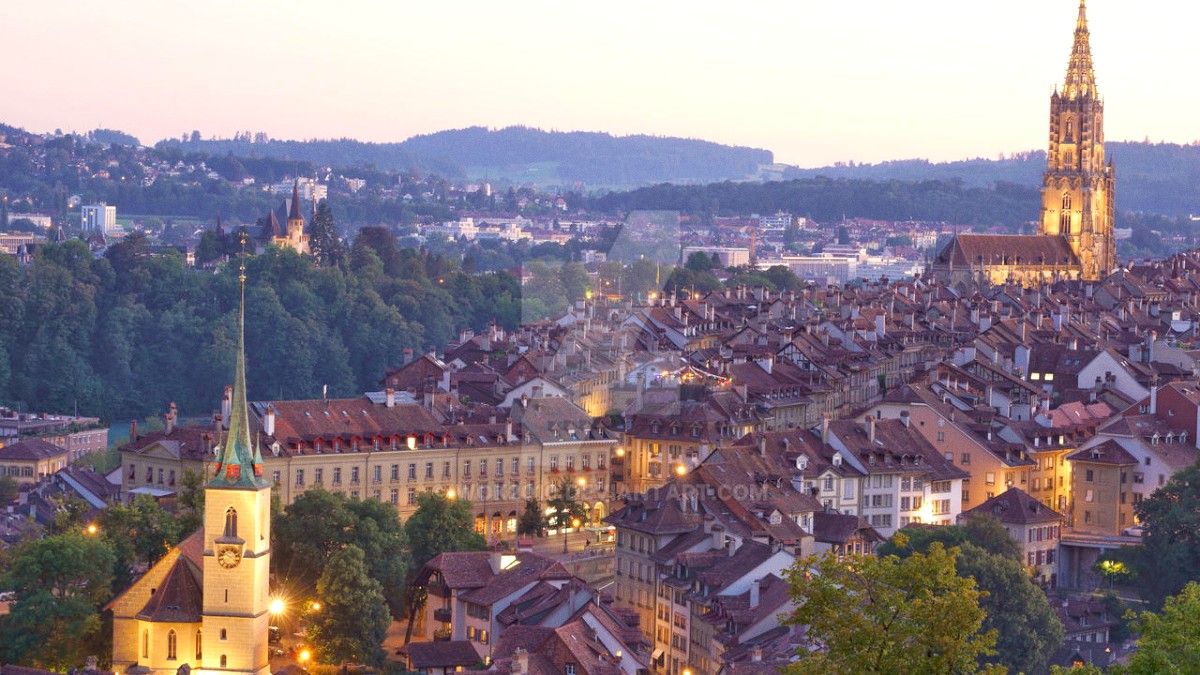
Switzerland
Swiss cuisine draws from German, French, and Italian influences. Bernese cuisine, in particular, has the hearty characteristics of German-speaking Switzerland. Historically, meals were substantial and energy-dense, reflecting demands of rural life and cooler climates.
Quality local produce, dairy, and meats are central. Cheese, potatoes, various meats (pork, beef, sausages), seasonal vegetables, and bread are common. Flavors tend to be rich, comforting, and savory.
A foundation of Swiss cuisine, with Emmentaler and Gruyère from nearby areas. Many dishes feature melted cheese.
A versatile staple, often fried, boiled, or roasted. Rösti is a prime example.
Pork, beef, and various sausages (e.g., Cervelat, Landjäger) are common. Smoked and cured meats also appear.
The defining Bernese dish. A hearty platter with various cooked meats, including beef, smoked pork, bacon, and sausages. Sauerkraut, green beans, and boiled potatoes accompany these meats.
A communal feast and a true local specialty. Find it in traditional Bernese restaurants.
A national dish of grated potatoes, pan-fried until crisp and golden brown. It functions as a side or a main course with toppings like a fried egg, cheese, or bacon.
A versatile and comforting food.
Fondue means melted cheese (Gruyère and Emmentaler) with white wine, served in a ceramic pot for dipping bread cubes. Raclette involves scraping melted cheese directly onto boiled potatoes, gherkins, and pickled onions.
Popular dishes, especially in colder months, enjoyed as social meals.
Globally recognized for its quality. Visit local chocolatiers or find famous brands. A Lindt Swiss Luxury Selection Box stands as a high-quality choice.
Züpfe is traditional braided white bread, often enjoyed on Sundays. Meringue with Nidle (cream) means crisp meringue with rich whipped cream, popular in the Bernese region.
Bern holds Michelin-starred or GaultMillau-listed restaurants offering exquisite culinary experiences. Bay in Hotel Schweizerhof or Restaurant Schöngrün are examples.
Mid-range restaurants are present throughout the Old City and surrounding areas. They feature a mix of traditional Swiss, European, and international dishes. Cozy taverns, bistros, and family-friendly eateries are common.
Bern, due to its diverse population, is a wide array of international restaurants. These include Italian, Asian (Thai, Chinese, Japanese), Indian, Middle Eastern, and others.
Vegetarian dishes are on menus, often clearly marked. Vegan options are becoming more common, especially in larger restaurants and health-focused eateries. Supermarkets hold good selections of plant-based products for self-catering.
Many restaurants accommodate these preferences.
Halal and Kosher options are more limited. Some specialized restaurants or butchers might be found, more so in larger cities like Zurich, but less common in Bern. Research specific establishments beforehand.
Planning ahead is advisable.
Clearly communicate specific needs to restaurant staff. A Translation card in German or French can be useful. Larger restaurants are generally better equipped for such requests.
Online forums and apps for travelers with dietary restrictions can provide restaurant recommendations.
Inform your accommodation in advance if you have specific breakfast requirements.
Consider local markets for fresh, raw ingredients to prepare meals yourself.
Check Bern's local event calendar for food festivals or themed markets, especially during seasonal transitions.
The annual Zibelemärit (Onion Market) in late November is an unique cultural and culinary event.
Explore cellar restaurants and bars located in the Old City’s vaults. These hold a distinctive ambiance and often serve traditional Bernese dishes.
A glimpse into Bern's historic dining.
Not a modern food hall, but markets around Bern present chances to sample fresh ingredients.
The Bernese culinary journey unveils a spectrum from traditional, hearty local cuisine to diverse international flavors.
Located in Hotel Schweizerhof, offering exquisite fine dining.
Known for high-quality ingredients and creative menus.
Seek out cozy taverns in the Old City for authentic local dishes.
Many restaurants are located in the historic vaults of the Old City.
A unique setting for your meal.
Dining in the Old City places you amidst lively streets and historic charm.
Ideal for those seeking a atmosphere.
Explore local cheese shops or markets for a variety of Swiss cheeses, including Emmentaler.
Visit a local chocolatier for artisanal Swiss chocolate creations.
Pair your meal with a regional Swiss wine, often not exported beyond Switzerland.
Consider making reservations for popular restaurants, especially on weekends or for fine dining.